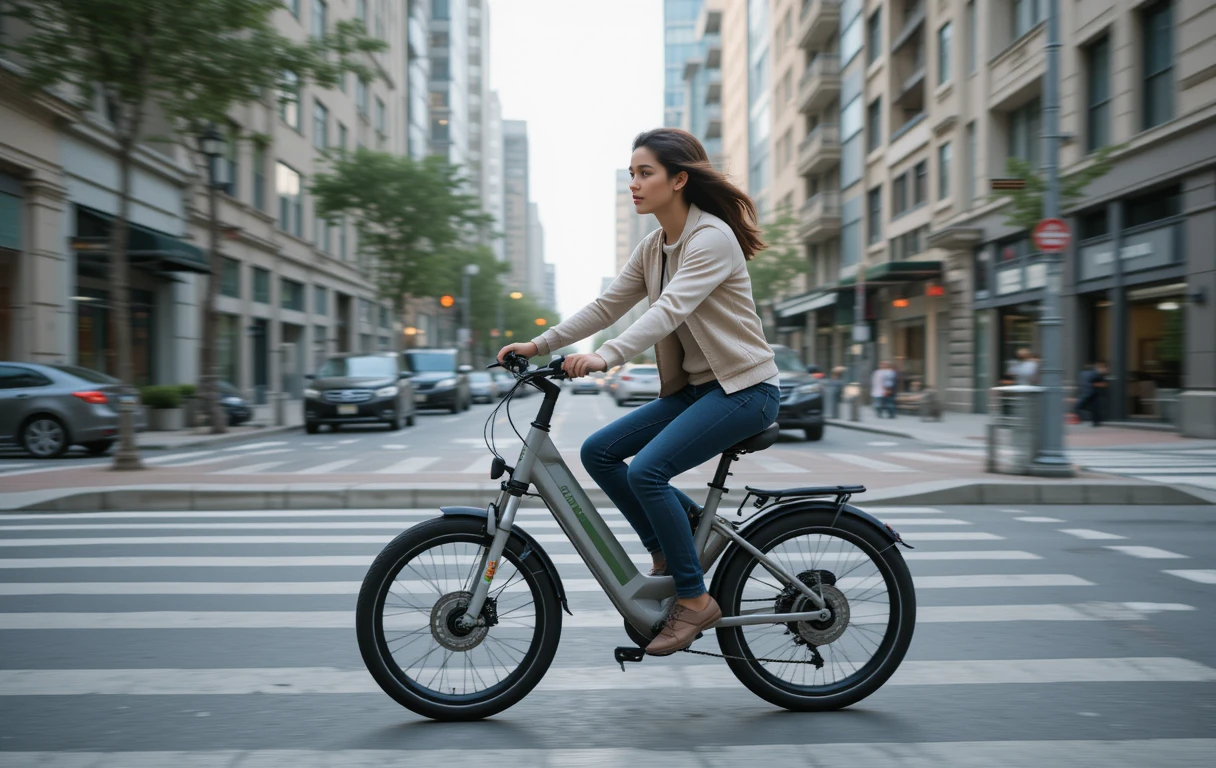Millennials have always been the trendsetters of modern society, redefining the way we work, socialize, and even commute. As the global focus shifts toward sustainability and convenience, e-bikes have emerged as a game-changer in urban transportation. But what makes them so appealing to millennials? From environmental concerns to cost-effectiveness, e-bikes are ticking all the right boxes. In this article, we’ll dive into why e-bikes have become the preferred mode of transportation for the millennial generation and why they might just be the future of urban mobility.
The Rise of E-Bikes in Urban Transportation
Electric bikes, or e-bikes, have revolutionized how people navigate cities. Unlike traditional bicycles, e-bikes come equipped with a small electric motor that provides pedal assistance, making longer commutes or uphill rides much easier. Their popularity has surged in the past decade, especially among millennials, who value practicality and innovation in their day-to-day lives. According to recent studies, e-bike sales have grown by over 240% globally since 2020, with millennials accounting for a significant portion of buyers.
Why Millennials Are Choosing E-Bikes
Millennials are often labeled as the “eco-conscious” and “pragmatic” generation. They are digital natives, always seeking smart solutions to modern-day problems. Here’s why e-bikes resonate with their values:
1. Environmental Consciousness
Millennials are deeply concerned about climate change and are actively seeking ways to reduce their carbon footprint. E-bikes offer a sustainable alternative to cars and motorcycles, emitting zero greenhouse gases during operation. When compared to traditional vehicles, e-bikes are an eco-friendly option that aligns with millennials’ commitment to protecting the planet.
2. Affordability and Cost Savings
Owning a car is expensive, especially with rising fuel prices, maintenance costs, and insurance premiums. E-bikes, on the other hand, are much more affordable. They have lower upfront costs, minimal maintenance expenses, and no need for gasoline. For millennials juggling student loans, rent, and other financial responsibilities, e-bikes present a budget-friendly alternative to traditional transportation.
3. Health and Wellness Benefits
Millennials are prioritizing their physical and mental health more than ever before. E-bikes provide an excellent way to stay active while commuting, allowing riders to pedal as much or as little as they want. The added pedal assistance reduces strain on the body, making cycling accessible for people of all fitness levels. Plus, spending time outdoors while riding is a great stress-reliever after a long day at work.
4. Convenience in Urban Environments
Urban areas are notorious for traffic congestion and limited parking. E-bikes are compact, agile, and easy to navigate through crowded streets, saving precious time during commutes. Many cities are now investing in bike lanes and e-bike-friendly infrastructure, making them an even more convenient choice for urban dwellers.
Features That Make E-Bikes Irresistible
1. Pedal Assistance
E-bikes come with electric motors that provide assistance while pedaling. This feature is particularly helpful for long commutes, uphill climbs, or days when you’re just not in the mood for an intense workout.
2. Speed and Range
Modern e-bikes can reach speeds of up to 28 mph and cover distances of 20 to 100 miles on a single charge, depending on the model. For millennials who value efficiency, this means faster commutes and fewer stops to recharge.
3. Lightweight and Stylish Designs
Manufacturers are now creating sleek, lightweight e-bike models that cater to the aesthetic preferences of millennials. From minimalistic designs to vibrant color options, there’s an e-bike for every taste.
The Role of E-Bikes in Sustainable Urban Mobility
The rise of e-bikes is part of a larger movement toward sustainable urban mobility. Cities across the globe are grappling with traffic congestion, air pollution, and the need for greener transportation solutions. E-bikes are proving to be a practical answer, offering a balance of efficiency and eco-friendliness. Many urban planners are now incorporating e-bikes into their public transportation strategies, such as bike-sharing programs and dedicated cycling lanes.
How Millennials Are Shaping the E-Bike Market
Millennials are not just adopting e-bikes; they’re driving innovation in the industry. Their demand for smarter, more sustainable transportation options has pushed manufacturers to develop advanced features such as app connectivity, GPS tracking, and customizable riding modes. Companies like Rad Power Bikes, VanMoof, and Specialized are leading the charge, creating e-bikes tailored to the needs of tech-savvy, environmentally conscious consumers.
Challenges Facing the E-Bike Revolution
While e-bikes offer numerous benefits, they are not without challenges. High upfront costs can be a deterrent for some, and the lack of widespread charging infrastructure in certain areas limits their usability. Additionally, safety concerns like theft and the need for better road-sharing etiquette between cars and bikes remain issues that need to be addressed.
The Future of E-Bikes
The future of e-bikes looks bright, with advancements in battery technology, smart features, and infrastructure development on the horizon. As cities continue to prioritize sustainable transportation, e-bikes are poised to play a pivotal role in shaping how we commute. Millennials, with their penchant for adopting forward-thinking solutions, are likely to remain at the forefront of this transformation.
Conclusion
E-bikes are more than just a transportation trend—they’re a solution to some of the most pressing challenges of our time. Millennials, with their eco-conscious mindset and appreciation for innovation, have embraced e-bikes as the go-to mode of transportation. With their combination of sustainability, affordability, and convenience, e-bikes are not just transforming how we commute but also paving the way for a greener, smarter future.




